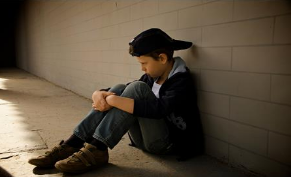We Care About Your Privacy
By clicking “Accept all”, you agree to the storing of cookies on your device to enhance site navigation, analyze site usage, and assist in our marketing efforts. View our Privacy Policy.
"One look is worth a thousand words." Barnard (1921), Chinese proverb.
Images are powerful as they can usually be interpreted regardless of the language spoken.

Someone sitting alone isn’t always negative. A title can make all the difference. For example, ‘Hope!’ What does this picture mean to you? ‘Alone!’ Now what does it mean?
An image like this allows learners to explore emotions and reasons with structures like ‘He’s feeling…because...' (see downloadable resource).
Teaching and learning through a picture can enable learners to widen their vocabulary as it inspires them to articulate their thoughts. Studies conducted by CEMA have shown people learning an additional language can learn by...
It's a method adopted by many practitioners including Pie Corbett (mentioned below) and the Learning Village, which offers EAL blended learning using this simple methodology. Teaching learners through imagery allows them to instantly understand what is being communicated, whether it is survival language, key words, sentence structures, stories or other content.
According to Pie Corbett (2008), “Children will implicitly internalise language patterns and reuse them in their writing, if they tell stories and read a lot, or read repetitively, or are read a regular bedtime story.” Corbett is the creator of Talk for Writing, a very helpful method of teaching for EAL learners.
When delivering Talk for Writing, a model text is turned into a simple text map (see resource). The children learn the text through acting it out and other helpful games such as tennis (in pairs children take it in turns to say each word of the story) or chase (similar to tennis, but as a group). This strategy works well for EAL learners as it allows them to grasp the context of the story and enables them to easily chant it by following the pictures and key words. These text maps are very versatile as you can focus on any key words or language structures you feel would be beneficial to your learners. The focus can be on relevant elements in the text e.g. nouns, adjectives, auxiliary verbs, punctuation.
Once the learners are confident in retelling the story, the text is introduced and they are expected to identify certain skills by imitating them, for example ‘There are two penguins/There is a walrus.’ They then innovate the sentence content following the sentence structure using the learnt vocabulary, e.g. ‘There are three Polar Bears/There is a Whale.’ They then apply the skills to other concepts, verbally and then in writing through labelling simple scenes with key words to writing descriptive sentences. ‘It is a successful strategy that the learners enjoy and attain at an accelerated pace.’ EEF (2015)
Teaching and learning through imagery and drama allows learners to remember and link words, sentence structures and concepts in all subjects, in a fun and engaging way.
References:
CEMA, (2006). Learning an Additional Language. (Saturday 25th November. 2017).
EEF, (2015). Talk for Writing. (Saturday 25th November. 2017).
Frederick R. Barnard, (1921). One picture is worth ten thousand words. Printer's Ink. December. P21-24.
The National Strategy Primary, (2010) Pie Corbett Writer-talk. Available here (Saturday 25th November. 2017).
International Mother Language Day (IMLD) is a worldwide observance celebrated annually on 21st February. It promotes awareness of cultural and linguistic diversity and international understanding through multilingualism and multiculturalism.
Studies have found that learning a skill yourself, and then applying it, not only brings immense personal satisfaction (among other valuable benefits), but also leads to greater achievement. It’s an important part of an enquiry-based curriculum.
Personal satisfaction can be achieved through learning that is personalised and by promoting a growth mindset. Carol Dweck, professor of psychology at Stanford University, explains simply how achievement and success can be perceived:
Lea Forest, my school in Birmingham, has been using the Learning Village for over three years. It has proved a highly effective learning and teaching resource, with the children making strong progress. The Learning Village asked us to pilot its newest feature: the Sentence Analyser!
We were seeking a resource that would help us teach the average 75,000 words needed for the children’s language to flourish and to deepen their morphology skills. We thought the Sentence Analyser may be a useful resource.